Researchers from Duke University discovered that a sponge is a better incubator than a petri dish used in labs at providing the perfect environment for a great diversity of bacteria to thrive. It is not only that sponges are often dirty with food pieces left unwashed in there, it is also […]
Swimming speed of geometrically similar animals is independent of body size. Consequently, required time for a given period has direct correspondence to linear size of animals. In other words, stroke frequency is proportional to mass (f∝m^-1/3) or length (f∝l^-1) for energy efficient swimming.
[…]
A long-standing goal of biology is the ability to predict gene expression from DNA sequence. A type of artificial intelligence known as a neural network, combined with high-throughput experiments, now brings this goal a step closer.
Learn more (opens external site)
The invertebrates ability to adapt to the environment during motion represents an intriguing feature to inspire robotic systems. We analysed the sipunculid speciesPhascolosoma stephensoni(Sipunculidae, Annelida), and quantitatively studied the motion behaviour of this unsegmented worm. The hydrostatic skeleton and the muscle activity make the infaunalP.stephensoniable to extrude part of its body […]
The PharmaSea, an EU-funded project, seeks to discover products that can cure infections and other diseases. They recently conducted this case study to determine which marine organisms are capable of producing biologically natural products to help treat human diseases. The results discovered in this case study are life-changing and can potentially […]
At this month’s Midday Science Cafe, we’ll learn about two new meat alternatives made from foods we already know and love: seaweed and mushrooms! First course: seaweed. Dr. Amanda Stiles from Berkeley Lab is researching ways to extract the protein from seaweeds and incorporate it into delicious new foods. The highly-digestible, […]
Researchers from University of Plymouth and University of Exeter conducted a study where they tracked thermographic changes in captive juvenile pheasant flocks as they had spontaneous aggressive interactions during a short confinement time frame. The researchers used thermal cameras to observe the young pheasants and their temperature changes during aggressive interactions […]
Researchers studying Mantis shrimp discovered that the shrimp’s hammer-like appendage can release a strike with a force over 1000 times its body weight. The appendage uses a system of latches, springs, and levers to release the blow. In addition to the initial strike, researchers discovered that a second round of energy […]
Paper, The elastic secrets of the chameleon tongue
The ballistic projection of the chameleon tongue is an extreme example of quick energy release in the animal kingdom. It relies on a complicated physiological structure and an elaborate balance between tissue elasticity, collagen fibre anisotropy, active muscular contraction, stress release and geometry. A general biophysical model for the dynamics of […]
Miraculous skin metamorphosis for beached amphibious fish
Taking those first steps on land after emerging from the primordial swamp required a lot more than simply changing the way the earliest pioneers moved and breathed. The ancient innovators must also have sealed their skins to prevent water loss in the relatively dry surroundings. They may even have repurposed their external layer to absorb […]
News, Ants Never Get Stuck in Traffic James. Here’s Why
Ants are much better than humans at organizing their collective traffic flow when foraging for food, but how they manage to do so isn’t fully understood.
Learn more (opens external site)
In a recent paper, researchers at the American Institute of Physics analyzed the swimming of zebrafish in a tank with particle image velocimetry and high-speed cameras. Their data showed that zebrafish are able to precisely control body fluctuations in order to generate “movable vortex pairs of high- and low-pressure regions” which […]
News, underground communication networking of trees
“Wise old mother trees feed their saplings with liquid sugar and warn the neighbors when danger approaches. Reckless youngsters take foolhardy risks with leaf-shedding, light-chasing and excessive drinking, and usually pay with their lives. Crown princes wait for the old monarchs to fall, […]
Memory is traditionally associated with complex organisms that have a nervous system. However, simple organisms can store information about previous experiences, such as nutrient sources, for survival purposes. Organisms like the unicellular slime mold Physarum polycephalum utilizes its network of interlaced tubes in varying diameters that shrink and grow in response […]
Recognition of natural objects in the archerfish
This article suggests that there is an existence of a complex visual process in the archerfish visual system that enables object recognition and categorization.
Learn more (opens external site)
Snake’s have infrared vision. Scientists in this paper research and examine snakes to determine if infrared receptors in snakes are via thermal or photochemical mechanisms
Learn more (opens external site)
This article reviews the liquid-mediated adhesion and capillary forces of slug mucus which allows slugs to stick almost any solid surface and move locomotively. The researchers test slug adhesion on both anti-adhesive and non-wetting surfaces.
Learn more (opens external site)
Paper, ‘Math neurons’ identified in the brain
The brain has neurons that fire specifically during certain mathematical operations. The findings indicate that some of the neurons detected are active exclusively during additions, while others are active during subtractions. They respond in the same manner whether the calculation instruction is written down as a word or a symbol.
Researchers found a bull ant venom component that exploits a pain pathway in mammals, which they believe evolved to stop echidnas attacking the ant’s nests.
Abstract:
Australian bull ants have evolved a venom molecule perfectly tuned to target one of their predators — the echidna — that also could have […]
Mechanics behind the shell of crush-resistant beetles
Previously it was thought that the steel plates of crush-resistant beetles and the material that composed the exoskeleton itself lended itself to the great strength of the shell. However, it was recently discovered that it is the connections between the exoskeleton and elytra (a specific exoskeleton substructure) which create an air-filled […]
Centimetre-scale fliers must contend with the high power requirements of flapping flight. Insects have elastic elements in their thoraxes which may reduce the inertial costs of their flapping wings. Matching wingbeat frequency to a mechanical resonance can be energetically favourable, but also poses control challenges. Many insects use frequency modulation on […]
This beautiful shrub is native to Europe, North Africa, and West Asia. It is one of the best-known poisonous plants from ancient Egypt to the Middle Ages up until now. It is the ancient Egyptians they were responsible for promoting its use as a powerful narcotic.
The toxins responsible for its […]
The amazing adhesive property of the gecko toe has been researched, analysed and documented to a significant degree, but there has been little research on how a gecko is able to coordinate its many ‘sticky’ toes in agile motion. A recent research conducted in May 2020 explores the control function of […]
The miniature robber fly Holcocephala fusca intercepts its targets with behaviour that is approximated by the proportional navigation guidance law. During predatory trials, we challenged the interception of H. fusca performance by placing a large object in its potential flight path. In response, H. fusca deviated from the path predicted by […]
Podcast, Forests on Forests
Second part of a story about the forest’s interconnectedness through its roots. In fact, this story is about canopy soil, a relatively new discovery that soil exists on the top of trees that helps to facilitate all sorts of life. The major discovery in this piece, however, was the fact that there were trees of […]
News, Hawks’ pursuit of prey has implications for capturing rogue drones
Researchers at the University of Oxford have found that Harris Hawks, when pursuing an erratically maneuvering dummy bunny, can utilize a mixed guidance law to more effectively pursue it. Their turn rate is determined by feeding back information on the angle between their target and current flight direction, along with how […]
This article is about research on the ladybird beetle’s adhesive ability in the air and underwater. It was considered that the air bubbles underneath the pads of the legs would help them walk on high slope surface, but the team is testing out if that is actually the case.
Learn more (opens external site)
Paper, Comprehensive Biomechanism of Impact Resistance in the Cat’s Paw Pad
This study investigated the impact-resistant biomechanism of a cat’s paw from macroscopic and microscopic perspectives. The sample of the study included five domestic cats that died of heart disease. After being approved by the Science and Ethics Committee of Beihang University, the cats’ bodies were used for anatomical analysis. There were […]
A new study has found the tiny structures made up of mushroom-shaped micropillars topped with ultra-small pores allow lizards to quickly detach their tails when needed.
Microscopy images showed that each lizard tail muscle break-off point consists of highly dense mushroom-shaped micropillars with ultra-small nanopores dotting […]
Paper, Lizard tails break off when needed.
A team of researchers affiliated with several institutions in the United Arab Emirates and the U.S. has discovered the mechanism that allows lizards to maintain a tail during normal activities and then to release it when they need to avoid predators.
Cellular pathways that repair chromosomal double-strand breaks (DSBs) have pivotal roles in cell growth, development and cancer. These DSB repair pathways have been the target of intensive investigation, but one pathway — alternative end joining (a-EJ) — has long resisted elucidation. In this Review, we highlight recent progress in our understanding of a-EJ, especially the […]
Scientists reveal how Venus fly trap plants snap shut
In this connection we have highlighted an article that describes how scientists have a breakthrough in their understanding of the proteins that allow venus flytraps to be touch sensitive and close. The name of this protein is called Flycatcher1, and having a better understanding of it gives scientists a better idea […]
A microbial compound in the gut leads to anxious behaviors in mice
A new study shows how a particular molecule, produced by gut bacteria, affects brain function and promotes anxiety-like behaviors in mice.
Learn more (opens external site)
Biological Discoveries:News, How does a lizard shed its tail?
Among many escape strategies that animals have evolved to evade capture by their predators, autotomy is a prominent one, whereby an animal self-amputates a body part, such as a leg or a tail (see the photo), just to elude its attacker. The ease with which animals can shed their body parts depends on the anatomy […]
Brainless slime mold grows in pattern like Tokyo’s subway system
A group of researchers led by Toshiyuki Nakagaki from the Hokkaido University in Japan, placed Physarum polycephalum in a petri-dish scattered with oat flakes. The position of food scraps was deliberately placed to replicate the locations of some of the most visited site […]
Ultra-dense, curved, grating optics determines peacock spider coloration
Controlling light through photonic nanostructures is important for everyday optical components, from spectrometers to data storage and readout. In nature, nanostructured materials produce wavelength-dependent colors that are key for visual communication across animals. Here, we investigate two Australian peacock spiders, which court females in complex dances with either iridescent color patterns (Maratus robinsoni) or an […]
News, Flexible wings take the effort out of swimming for diving penguins
Swimming with penguins in the wild is a mind-blowing experience. When the ‘mini torpedoes’ hurtle past, you can barely make out the animals’ shape, let alone their movements. This was the problem faced by Hiroto Tanaka and colleagues from the Tokyo Institute of Technology, Japan, as they tried to understand how […]
Researchers have discovered how certain flavonoids — a type of metabolic product from plants and other organisms — can kill yellow fever mosquito larvae. These compounds inhibit an enzyme, called Nobo, which is used to synthesize ecdysone, a key hormone in the life cycle of insects. The most efficient flavonoid tested, […]
To learn how to approach human limb regeneration, scientists have begun to study the incredible regenerative powers of the axolotl. Axolotls are capable of regrowing their limbs and even organs. This paper explores the possible insight that could be gained by understanding the genetics behind axolotl limb regeneration.
Bioinspired Nanochannel Membranes for Blue Energy Generation
The adjustable manufacturing of diverse polymer composites with nanostructures for osmotic power generation, including homopolymer membranes, mix membranes, and Janus membranes, is discussed in a study available as a pre-proof in the journal Giant.
Learn more (opens external site)
Learn about our two Decals!
 Click here to find out more about our Fall Bioinspired Design Decal and our Spring Bioinspired Design in Action Decal – ALL MAJORS are welcome.
Click here to find out more about our Fall Bioinspired Design Decal and our Spring Bioinspired Design in Action Decal – ALL MAJORS are welcome.Berkeley BioDesign Community
 Click here to learn about the BioD: Bio-Inspired Design @ Berkeley student organization or here to signup for more info.
Click here to learn about the BioD: Bio-Inspired Design @ Berkeley student organization or here to signup for more info.Search
Student Login







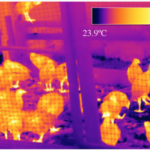
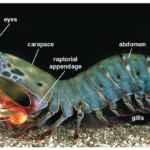
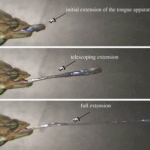
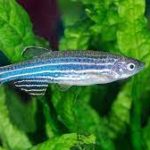


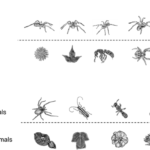
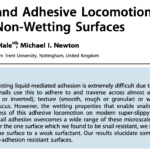
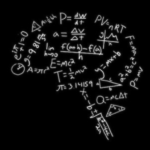
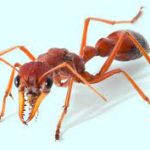

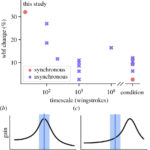


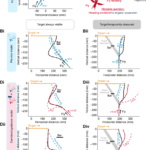


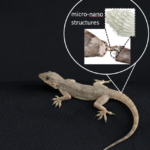
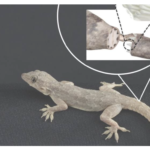
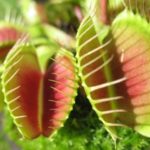

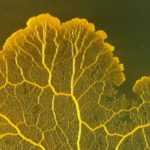
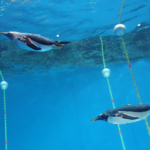
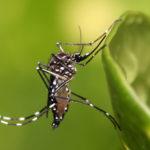
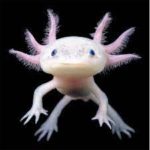
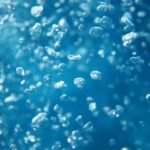


I imagine that the neurological circuits underlying these processes are governed by both 2d spacing maps with their brains as…
to reduce the impact of car accidents, it may be possible to study the force diverting physics of cockroaches to…
you see this type of head-bobbing stability in many avian creatures related to pigeons like chickens. the head ability to…
not like they taught horses how to run! this is an example of convergent evolution where both sea creatures and…
The brain functions in a similar way with neuronal connections. our brains are able to utilize the multiplicity of connections…